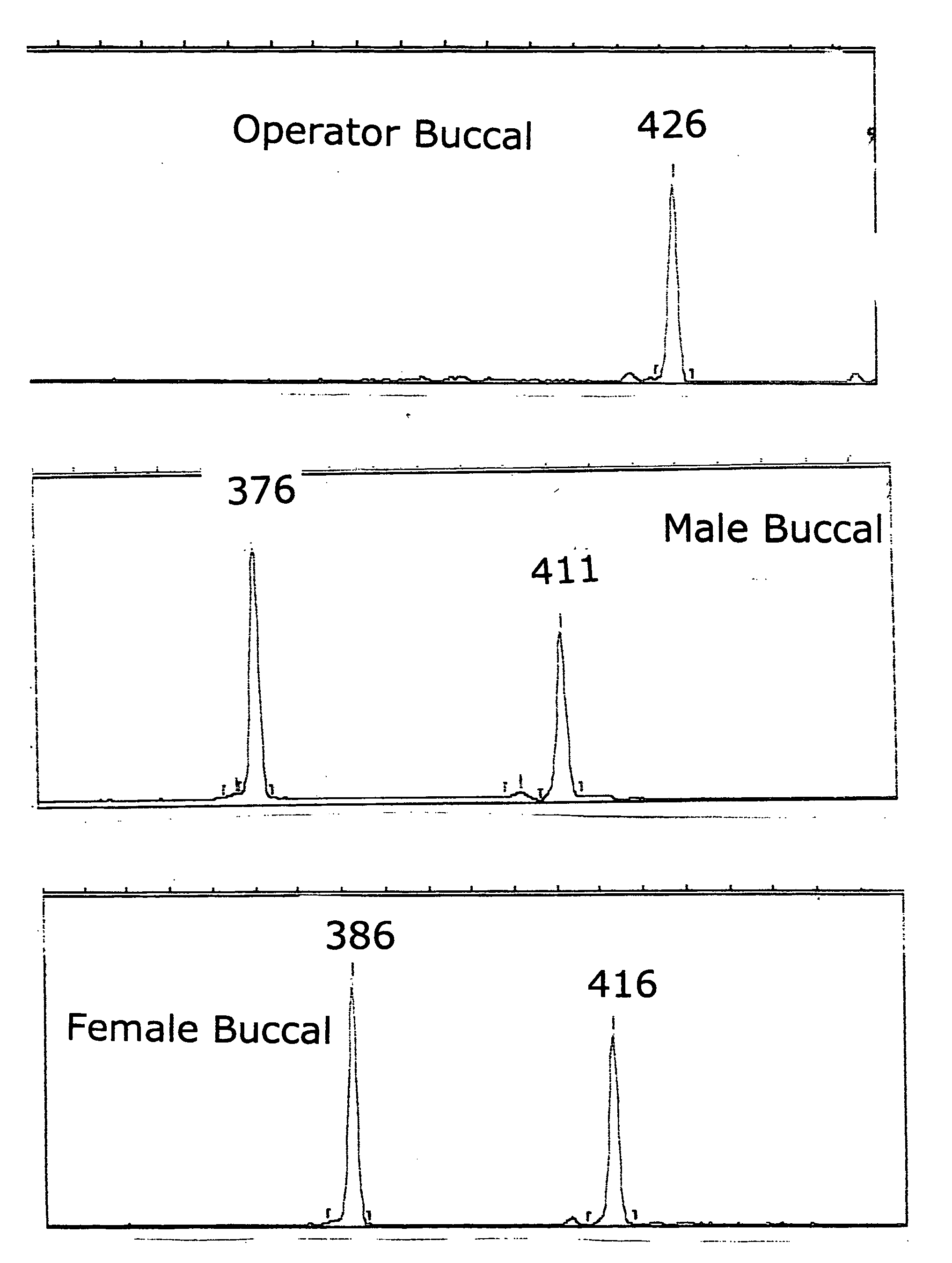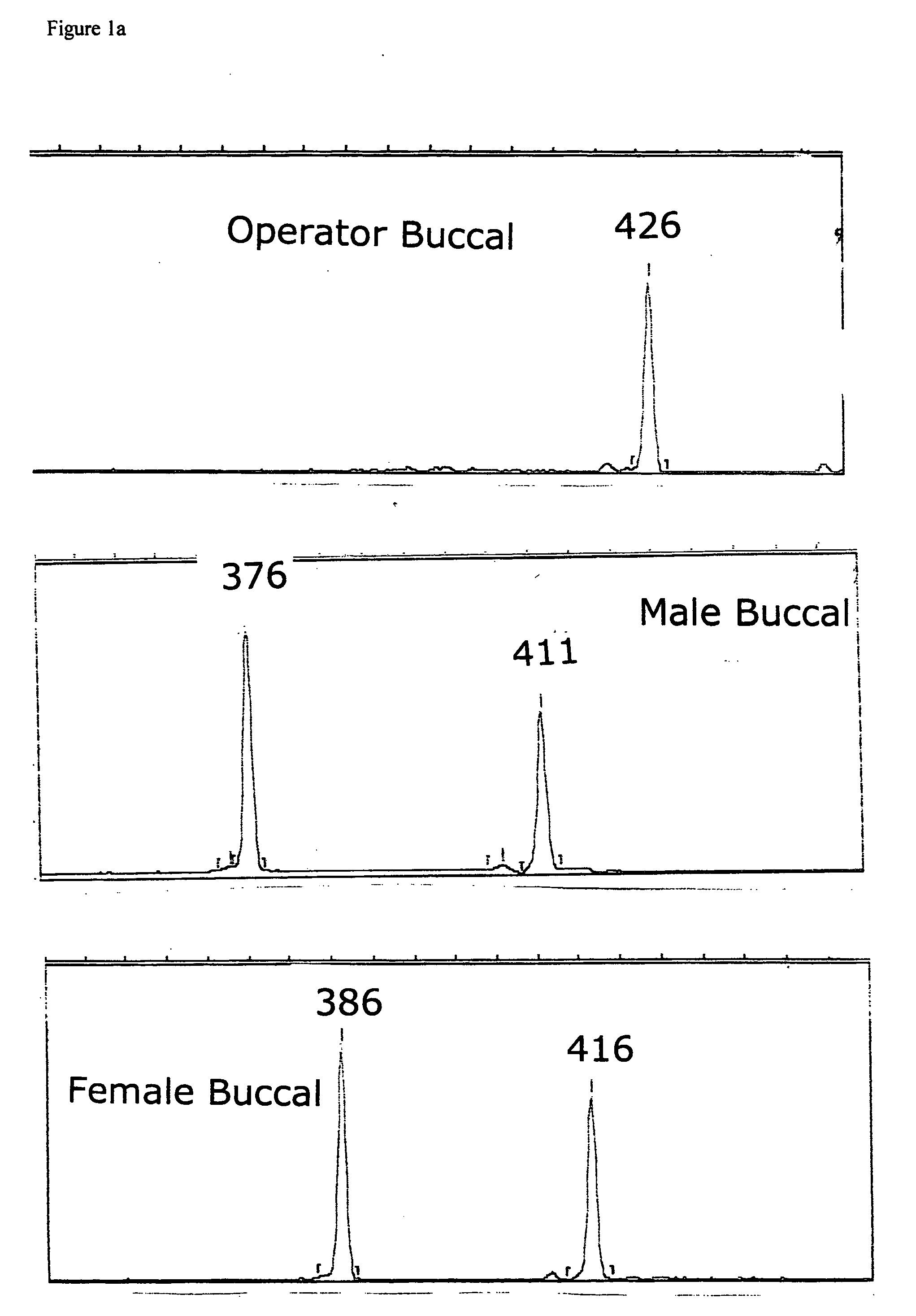Homogeneous method to prepare sperm DNA from sexual assault cases
- Summary
- Abstract
- Description
- Claims
- Application Information
AI Technical Summary
Benefits of technology
Problems solved by technology
Method used
Image
Examples
examples
[0021]50,000 sperm were treated using the above protocol, either with or without DNAse 1 treatment. DNA was isolated using Qiagen microamp columns, and resuspended in 20 ul of AE buffer. The DNA was quantified using a qPCR assay capable of detecting sub-picogram amounts of DNA. The qPCR assay uses a SyberGreen dye and primers to amplify the 18S ribosome genes. The results are as follows:
No DNase: 42 nanograms
Plus DNase: 39 nanograms
These results show that DNAse 1 treatment does no degrade sperm DNA.
[0022]Epithelial cells from a buccal swab were then digested with 1 ml 2% Triton X-100, 20 mM Tris pH 8.0, and proteinase K at 400 ug / ml for 4 hours at 56 degrees, and this solution was split in half. Half was treated with DNAse 1 as described above and half was not treated with DNAsel. The DNA was isolated using Qiagen microamp columns, resuspended in 20 ul of AE buffer, and quantitated by qPCR. The results are as follows:
No DNase: 340 nanograms
Plus DNase 300 picograms
[0023]Therefore DNa...
PUM
 Login to View More
Login to View More Abstract
Description
Claims
Application Information
 Login to View More
Login to View More - R&D
- Intellectual Property
- Life Sciences
- Materials
- Tech Scout
- Unparalleled Data Quality
- Higher Quality Content
- 60% Fewer Hallucinations
Browse by: Latest US Patents, China's latest patents, Technical Efficacy Thesaurus, Application Domain, Technology Topic, Popular Technical Reports.
© 2025 PatSnap. All rights reserved.Legal|Privacy policy|Modern Slavery Act Transparency Statement|Sitemap|About US| Contact US: help@patsnap.com



